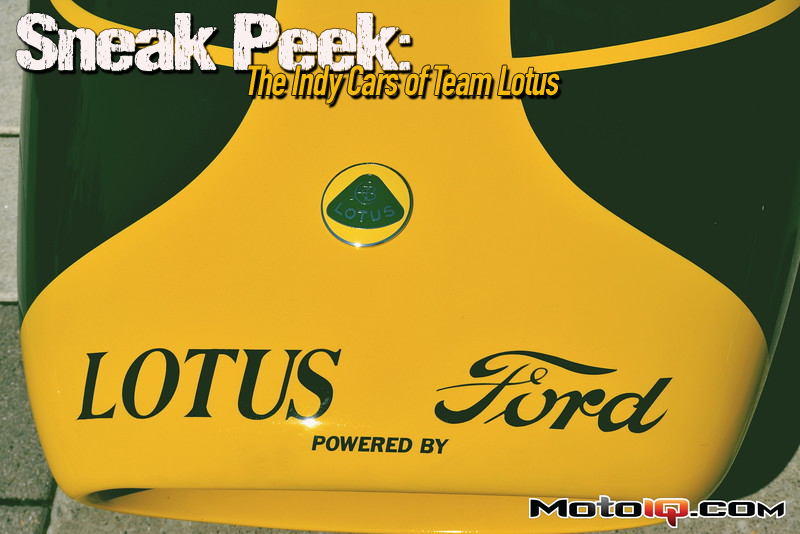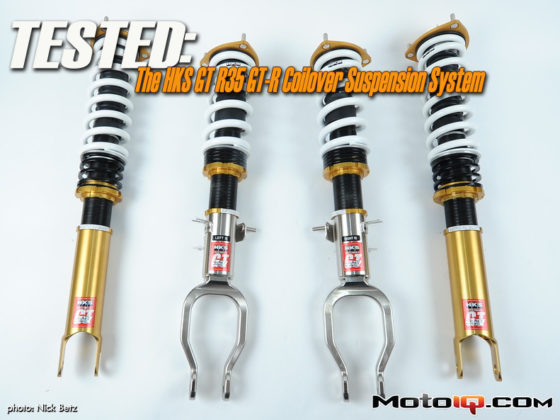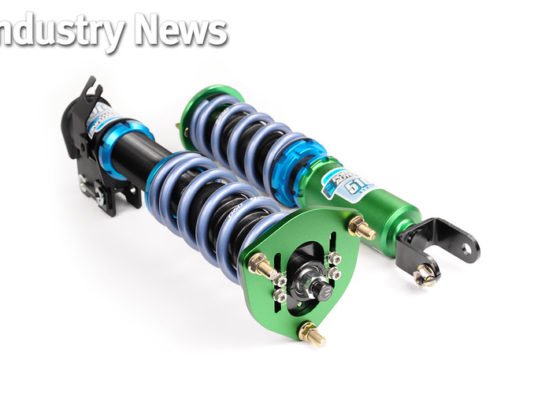Sneak Peek: The Indy Cars of Team Lotus
Heritage is one of the defining traits of Indianapolis Motor Speedway. Few tracks can boast the longevity of Indy or the names who have graced its century old grounds. To help preserve that history, IMS has its own museum, dedicated to the various races that Indy plays host to. Inside, you will see a fascinating history of the track and more importantly for our purposes, a large number of ex-Indianapolis race cars on an ever rotating display. In fact the Speedway owns the majority of the 500 winning cars, along with some Brickyard 400 winning NASCARs, and even a few ex-USGP winning F1 cars. The museum also owns some non-winning 500 cars, and even some former famous driver’s cars that had nothing to do with the 500 (for example some of AJ Foyt’s old Sprint cars are owned and maintained by the museum). Best of all, each of these cars is kept in perfect running order and many cars are driven once a year around the track. On Legend’s Day, an event held the day before the 500 to honor one of Indy's famous drivers, the Speedway dusted off a number of their most famous cars and brought them out into the warm May sun to let fans bask in the glories of old Indy.

After watching the parade of cars and the Legend’s Day ceremonies, we walked to the Midway and spotted a pair of beauties…genuine Lotus IndyCars! We had to stop and drool, and of course take lots and lots of pictures for you, our faithful MotoIQ readership! These were not just any Lotus cars: These were both driven by the late Jim Clark himself.
 These two cars represent the blueprint for Indianapolis. In the 1960s, IndyCars were still the classic Roadster design. These cars were based on dirt track Sprint cars of the day with their big, heavy, supercharged Offenhauser or Novi engines up front and the driver in the rear. Rear engine cars had been campaigned at Indianapolis sporadically, but it wasn’t until Lotus brought the Type 29 in 1963 (car 92) that rear engine cars became truly competitive. The later Type 34 (car 6) was the next evolution of this design.
These two cars represent the blueprint for Indianapolis. In the 1960s, IndyCars were still the classic Roadster design. These cars were based on dirt track Sprint cars of the day with their big, heavy, supercharged Offenhauser or Novi engines up front and the driver in the rear. Rear engine cars had been campaigned at Indianapolis sporadically, but it wasn’t until Lotus brought the Type 29 in 1963 (car 92) that rear engine cars became truly competitive. The later Type 34 (car 6) was the next evolution of this design.The 29 was an off-shoot of the 25 that Lotus had been using in Formula 1. The Type 25 was one of the first F1 cars to successfully use a monocoque body (as opposed to the tube frame cars F1 had seen previously) and used its engine as a stressed member of the chassis, cleaving hundreds of pounds of weight from the already diminutive Lotus 21 chassis, while tripling stiffness. The Type 25 used a tiny Coventry Climax engine (the standard engine used by many teams of the time), however the 1.5L V8 would be no match for Indy’s fast straights. Even with their weight advantage, the massive power of the blown Offys would overwhelm the little Lotus on the straights.
 The 29 was developed with both a conventional suspension, and an offset suspension, seen here. The offset suspension helped the car corner left, important on an oval like Indy. The double wishbone suspension from the 25 was carried over, albeit with some modifications, including the offset, as well as a lengthening of the wheelbase to accommodate a larger engine and meet USAC regulations. You will notice the dampers are not visible in the front. The upper control arms double as rocker arms. The dampers are contained underneath the body for better aerodynamics. Unlike later open wheel cars, the Lotus 29 has its radiator mounted in the nose. The front does not feature any swaybar, not even under the bodywork.
The 29 was developed with both a conventional suspension, and an offset suspension, seen here. The offset suspension helped the car corner left, important on an oval like Indy. The double wishbone suspension from the 25 was carried over, albeit with some modifications, including the offset, as well as a lengthening of the wheelbase to accommodate a larger engine and meet USAC regulations. You will notice the dampers are not visible in the front. The upper control arms double as rocker arms. The dampers are contained underneath the body for better aerodynamics. Unlike later open wheel cars, the Lotus 29 has its radiator mounted in the nose. The front does not feature any swaybar, not even under the bodywork.





1 comment
It was NOT Parnelli Jones who convinced Colin Chapman to design the Lotus 29. It was Dan Gurney.